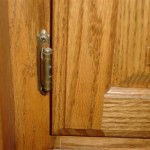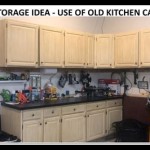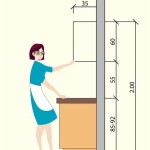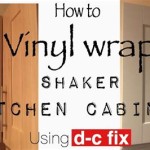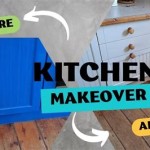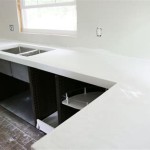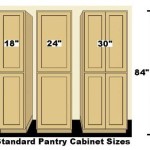What Are Cover Panels For Kitchen Cabinets?
Cover panels, also known as decorative panels or end panels, are essential components in kitchen cabinet installations that often go unnoticed but significantly contribute to the overall aesthetic and functionality of the space. These panels are typically flat, finished surfaces used to conceal exposed cabinet sides, creating a seamless and polished look. While seemingly simple, their purpose extends beyond mere cosmetic enhancement, impacting the durability, structure, and perceived value of the kitchen.
Understanding the various types of cover panels, their applications, and the benefits they offer is crucial for homeowners and kitchen designers aiming to achieve a professional and refined kitchen design. The correct selection and installation of cover panels can elevate the entire kitchen, transforming a standard cabinet arrangement into a custom-built, high-end aesthetic.
This article will explore the multifaceted role of cover panels in kitchen cabinetry, delving into their purpose, types, material considerations, and installation techniques. It will also address the impact of cover panels on the kitchen's overall design and functionality, providing a comprehensive understanding of these often-underappreciated elements.
The Primary Purposes of Cover Panels
Cover panels serve several key purposes in kitchen cabinet installations, each contributing to the overall quality and appearance of the finished project. These purposes can be broadly categorized as aesthetic enhancement, structural support, and protection. Understanding these distinct functions provides a clearer picture of the value and importance of cover panels.
From an aesthetic perspective, cover panels provide a finished and cohesive look to the kitchen. Standard cabinet boxes are often constructed with unfinished sides, which can be visually unappealing. Installing cover panels conceals these raw edges, creating a smooth, consistent surface that matches the cabinet doors and drawer fronts. This is particularly important for exposed cabinet ends, such as those adjacent to appliances, walls, or open spaces. The panels provide a clean transition and prevent the cabinets from appearing incomplete or piecemeal.
Beyond aesthetics, cover panels contribute significantly to the structural integrity of the cabinet installation. They add extra support to the sides of cabinets, particularly at the ends of a run of cabinets or in areas where cabinets are subjected to heavy use. This is especially important for tall pantry cabinets or base cabinets holding heavy items. By reinforcing the cabinet sides, cover panels help prevent racking or warping over time, extending the lifespan of the cabinetry.
Finally, cover panels offer a layer of protection to the cabinet boxes themselves. They shield the cabinet sides from moisture, impacts, and general wear and tear. This protection is particularly valuable in kitchens, where spills and splashes are common. The panels act as a barrier, preventing damage to the underlying cabinet material and ensuring that the cabinets maintain their appearance and structural integrity for a longer period. In high-traffic areas, cover panels can also prevent accidental scratches or dents to the cabinet sides.
In summary, cover panels provide a trifecta of benefits: they enhance the aesthetics of the kitchen, provide structural support to the cabinets, and protect the cabinet boxes from damage. This multi-faceted functionality makes them an indispensable component of any well-designed and professionally installed kitchen.
Types and Materials of Cover Panels
Cover panels are available in a variety of types and materials, each offering different aesthetic qualities, levels of durability, and price points. The selection of the appropriate type and material depends on factors such as the overall kitchen design, the desired level of formality, and the budget constraints of the project.
One common type is the flat panel, which is a simple, unadorned surface that provides a clean and contemporary look. These panels are typically made from medium-density fiberboard (MDF) or plywood and finished with a veneer, laminate, or paint. Flat panels are versatile and can be used in a wide range of kitchen styles, from minimalist to transitional.
Another type is the decorative panel, which features raised panels, grooves, or other embellishments that add visual interest and dimension to the cabinets. These panels are often used in more traditional or ornate kitchen designs. Decorative panels can be made from solid wood, MDF with wood veneers, or other composite materials. The choice of material depends on the desired level of detail and the budget.
End panels are specifically designed for the exposed ends of cabinet runs and often feature finished edges or decorative details that match the cabinet doors and drawer fronts. These panels are crucial for creating a seamless and polished look in the kitchen. Peninsula panels are used to conceal the exposed sides of kitchen peninsulas or islands and may incorporate decorative features or functional elements such as open shelving or seating.
The materials used to construct cover panels also vary widely. Solid wood is a premium option that offers exceptional durability and aesthetic appeal. However, it is also the most expensive choice. MDF is a cost-effective alternative that provides a smooth, stable surface for painting or laminating. Plywood is another durable option that offers good resistance to moisture. Laminates are a popular choice for cover panels due to their affordability, durability, and wide range of colors and patterns. Veneers, thin layers of real wood applied to a substrate, provide the look and feel of solid wood at a lower cost.
The selection of the appropriate type and material for cover panels should be based on a careful consideration of the desired aesthetic, the budget, and the functional requirements of the kitchen. Consulting with a kitchen designer or experienced cabinet installer can help ensure that the chosen panels are both visually appealing and structurally sound.
Installation Techniques and Considerations
Proper installation of cover panels is crucial for achieving a seamless and professional-looking kitchen. While the process may seem straightforward, attention to detail and adherence to best practices are essential for ensuring a successful outcome. This includes proper measurement, cutting, and attachment techniques.
Before beginning the installation, it is imperative to take accurate measurements of the cabinet sides that will be covered. This includes measuring the height, width, and depth of the cabinet, as well as any irregularities or obstructions that may need to be accounted for. It is always better to err on the side of caution and cut the panels slightly larger than necessary, as they can always be trimmed down to size. Use a level to ensure that the cabinets are plumb and square, as this will affect the alignment of the cover panels.
Cutting the cover panels to the correct size and shape requires precision and the use of appropriate tools. A circular saw or table saw is typically used to cut large panels, while a jigsaw or router can be used for more intricate shapes or cutouts. It is important to use a sharp blade and to cut slowly and steadily to avoid splintering or chipping the material. Edges that will be visible should be sanded smooth to remove any rough spots or imperfections. For laminated or veneered panels, using masking tape along the cut line can help prevent chipping.
Attaching the cover panels to the cabinet sides can be done using various methods, including screws, nails, or adhesive. Screws are the most secure option, but they require pre-drilling pilot holes to prevent splitting the wood. Nails are a faster option but may not provide as much holding power. Adhesive can be used in conjunction with screws or nails to provide extra stability. When using screws or nails, it is important to countersink them slightly below the surface of the panel and then fill the holes with wood filler or putty to create a seamless finish.
For panels that will be exposed to moisture, such as those near the sink or dishwasher, it is important to seal the edges with a waterproof sealant or caulk. This will prevent water from seeping into the panel and causing damage. When installing cover panels around appliances, it is important to leave adequate clearance for ventilation and access. Ensure that the panels do not interfere with the operation of the appliance or block any air vents.
The proper installation of cover panels requires careful planning, precise measurements, and the use of appropriate tools and techniques. By following these guidelines, homeowners and kitchen installers can achieve a professional and long-lasting result that enhances the beauty and functionality of the kitchen.
Selecting and installing cover panels requires a holistic approach, considering the overall kitchen design, the specific requirements of the space, and the budget limitations of the project. A well-executed cover panel installation can transform a standard kitchen into a custom-designed masterpiece.

Kitchen Cabinet Cover Panels Front Life

Kitchen Cabinet Cover Panels Front Life

Glossy Cabinet Side Panels For The Kitchen

How To Use Filler Panels With Your Cabinets House Home

How To Use Filler Panels With Your Cabinets House Home

Kitchen Cabinet Faux Panels Lowe S

Diy Cabinet End Panels With Shaker Style Trim Average But Inspired

Kitchen Cabinet Cover Panels Front Life

These Kitchen Cabinets Were Framed And They Re Not Guilty Perfect

Lerhyttan Cover Panel Black Stained 36x96 Stains Panels
Related Posts

